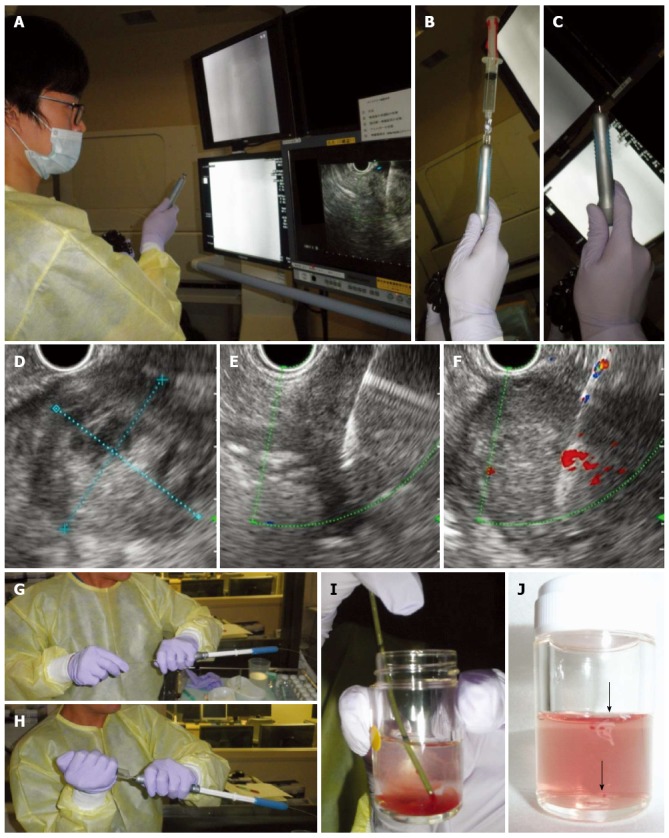Figure 1.

Actual condition of an endosonographer performing endoscopic ultrasonography guided-fine needle aspiration of a solid pancreatic lesion. A: An endosonographer puncturing a pancreatic mass by fine needle aspiration (FNA) needle with a stylet inside the needle; B: An FNA needle aspirated with a 10 mL syringe attached to the top (Suction method); C: An FNA needle without no suction applied by a syringe (Non-suction method); D: A target pancreatic lesion, with a central necrotic area, depicted by ultrasonography and measured for its size; E: A pass at the upper side of the tumor, avoiding the central necrotic area; F: A pass at the lower part of the tumor by the fanning method; G: Expulsion of the aspirated material by insertion of a stylet; H: Flushing out of the residual material with air (This process can often be skipped.); I: A bloody sample extruded into a medium; J: Whitish components separated into another container.
